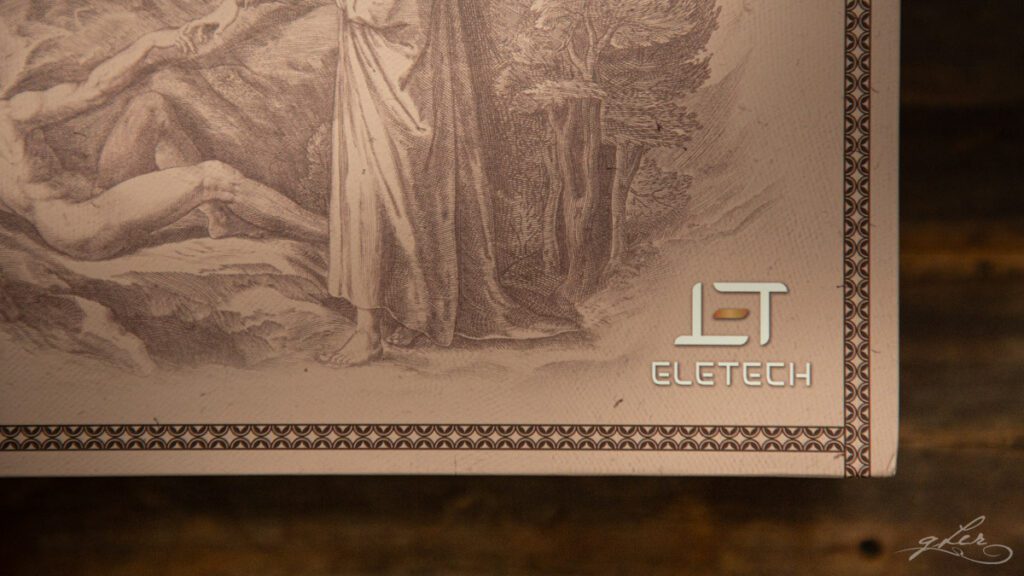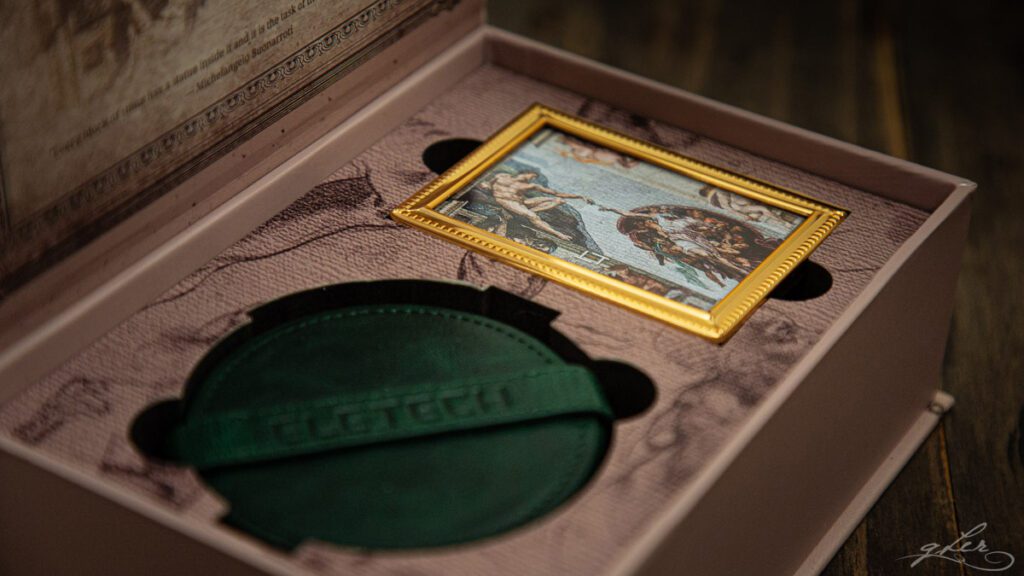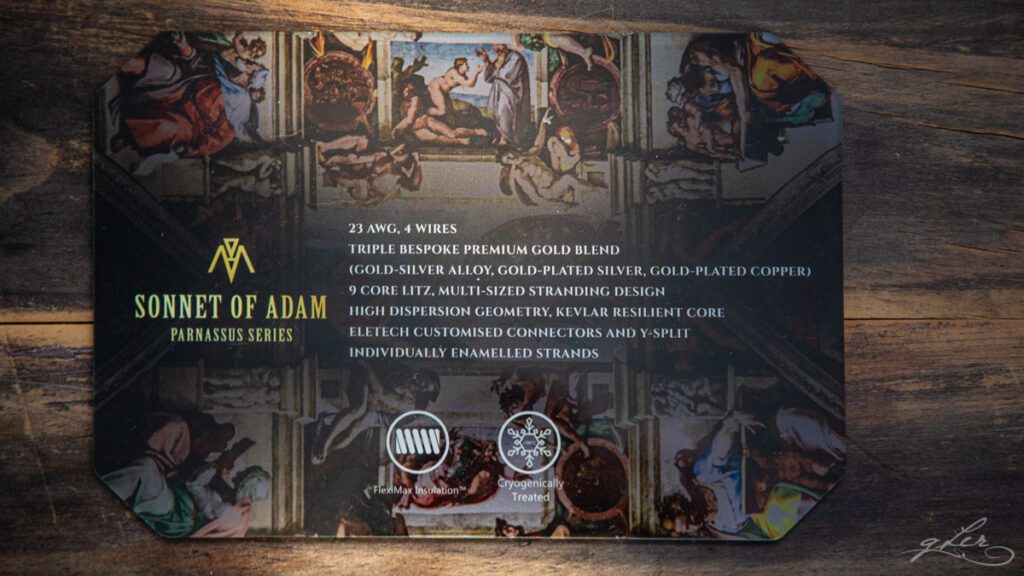I’d like to thank Eric Chong for sending us a retail sample of Sonnet of Adam for this review, though it goes without saying the opinions expressed herein are entirely my own.
Introduction
And on the sixth day, God made man. This paraphrased excerpt from the biblical Book of Genesis was the inspiration for Michelangelo Buonarroti’s ‘The Creation of Adam’, one of the Renaissance master’s most famous and widely-referenced works.
Commissioned by Pope Julius II for the Sistine Chapel in Venice at around the same time Raphael was working on his fresco series at the Vatican Palace, it signifies a particular period of art and culture where the ideals of harmony, proportion and beauty reigned supreme.
It’s easy to see how today’s artisans, like Element Technology’s (Eletech) Eric Chong, would take their own inspiration from this time of rebirth and discovery, where art, science and music emerged from the dark ages that came before, sowing the seeds for a significant swathe of human cultural development.
Sonnet of Adam is the second in Eletech’s Parnassus series of flagship IEM cables, sitting alongside the first, Ode to Laura. The series itself owes its name to Raphael’s The Parnassus, one of the many masterpiece works in the Raphael Rooms of the Vatican, and continues the current Renaissance-inspired themes of Eletech’s newer cable products.

But unlike Eletech’s ‘entry-level’ Raphael (reviewed here), which delivers outstanding value with performance well above its relatively modest cost, Sonnet of Adam is all about the pursuit of uncompromising – work with me here – sonic enlightenment.
With an eye-watering retail price of $2,799, this is a luxury product made for the serious enthusiast wanting only the very best components for his or her high-end portable sound system. Talk of value is not what this end of the cable market is all about, even though I’d posit there are far more expensive cables on the market that are far less impressive than Adam.
Packaging, design and fit
There are two schools of thought when it comes to packaging portable gear, especially cables. Some argue that cheap and cheerful is more than good enough, considering these products are generally going to be chained together and used on the go, so elaborate packaging is wasteful and unnecessary.

On the other hand, if you’re spending serious money on what is unquestionably a niche, exclusive product, you’d assume that quality packaging and accessories is the minimum a discerning buyer should expect.
I’m personally ambivalent on the issue, but it’s quite obvious how much care, effort and attention to detail has gone into creating Adam’s first impression, something which, as a fellow artisan, I greatly appreciate.
You know you’re getting something substantial when the delivery box is as large and heavy as it is. At almost twice the size of Raphael’s not-insignificant presentation box, Adam’s is a whole other level of sophistication.
Wrapped in a silkscreened dark green and charcoal sleeve with intricately die-cut patterns around a central gold-embossed logo, the presentation box itself is made of wood, complete with an invisible magnetic latch, wrapped in printed decals, including a variation of the Creation mural on the hinged lid.

Opening the box reveals another sketched version of the mural on the inside lid, and a protective sheet of foam, below which sits a fibreglass plaque printed with a colour segment of the Sistine Chapel works and overlaid with Adam’s technical specifications.
The plaque serves as a protective cover for the contents inside the box, including a green leather pouch with a gold zipper that holds the cable (and potentially a connected set of IEMs), a small gold-framed version of the Creation mural, a metal owner’s card with embossed serial number, and a green leather cable tie strap.
Make no mistake, this is about as elegant an unboxing as I’ve experienced in the hobby, and makes the presentations of most other high-end portable products, let alone cables, pale by comparison.
But all would be for nought if the product itself didn’t live up to expectations, and so this is what you’re really buying for the money:
- Triple bespoke premium gold conductors: gold-plated silver, gold-plated copper, and gold silver alloy
- 4 wire, 23awg configuration in a 9-core individually-enamelled, cryogenically-treated, multi-sized Litz design
- Kevlar core with high-dispersion geometry
- Ultra-soft sheathing
- Elaborately-designed and CNC’d customised connectors and Y-split hardware

If you’re of the view that thicker gauge and visible shielding invariably means better performance, your first thought when removing Adam from its pouch could well be one of scepticism. Physically, Adam is not dissimilar to Raphael, with an almost identical strand count and gauge, though its hardware is larger and more elaborate, and the mix of materials more premium.
This is not a ‘slight’ cable by any means, but nor is it finger-thick and unwieldly. The braids are just tight enough to stay linked without deforming, and loose enough to stay supple and kink-free. Build quality is superb, and you can only admire the patience it must have taken to design and produce Eletech’s now-iconic Y-split and 4.4mm connectors – updated with an all-new and original inlay motif.
The real advantage of erring on lighter and thinner, however, is in the wearing. Slip Adam’s gently-sloping clear guides around your ears and the cable almost disappears, exerting little to no pressure on the IEMs themselves. If comfort on your commute is what you’re after – and you’re brave enough to take a cable this expensive on a train – Adam will serve you very well indeed.

Continue to sound impressions…




2 Responses
Could you offer some more specifics with regard to the comparison, for example which among the 3 (FTS, Orphys, SOA) has the most resolution, where specifically(low end, highs, etc)? How do the stages differ? What about positioning, is it a mid forward cable, how does it compare to the others in that regard?
thanks
Sure, I would say it’s. ore or less on par with FTS and Orphy when it comes to resolution, and mainly in the mids (although there’s a resolution boost across the spectrum from how clean it makes the sound). It doesn’t have quite as low a noise floor as the other two, but it’s very close – at this level we’re talking barely perceptible levels of difference. It mostly comes down to tonality: the PWA cables are more aggressive in their colouration, where SoA will be closer to the sound profile of the IEM and source you plug it in to. And no, I wouldn’t say it’s mid-forward necessarily but it improves midrange clarity.